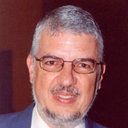Skeletal muscle degeneration induced by venom phospholipases A2: insights into the mechanisms of local and systemic myotoxicity.
Atslēgvārdi
Abstrakts
Local and systemic skeletal muscle degeneration is a common consequence of envenomations due to snakebites and mass bee attacks. Phospholipases A2 (PLA2) are important myotoxic components in these venoms, inducing a similar pattern of degenerative events in muscle cells. Myotoxic PLA2s bind to acceptors in the plasma membrane, which might be lipids or proteins and which may differ in their affinity for the PLA2s. Upon binding, myotoxic PLA2s disrupt the integrity of the plasma membrane by catalytically dependent or independent mechanisms, provoking a pronounced Ca2+ influx which, in turn, initiates a complex series of degenerative events associated with hypercontraction, activation of calpains and cytosolic Ca(2+)-dependent PLA2s, and mitochondrial Ca2+ overload. Cell culture models of cytotoxicity indicate that some myotoxic PLA2s affect differentiated myotubes in a rather selective fashion, whereas others display a broad cytolytic effect. A model is presented to explain the difference between PLA2s that induce predominantly local myonecrosis and those inducing both local and systemic myotoxicity. The former bind not only to muscle cells, but also to other cell types, thereby precluding a systemic distribution of these PLA2s and their action on distant muscles. In contrast, PLA2s that bind muscle cells in a more selective way are not sequestered by non-specific interactions with other cells and, consequently, are systemically distributed and reach muscle cells in other locations.


